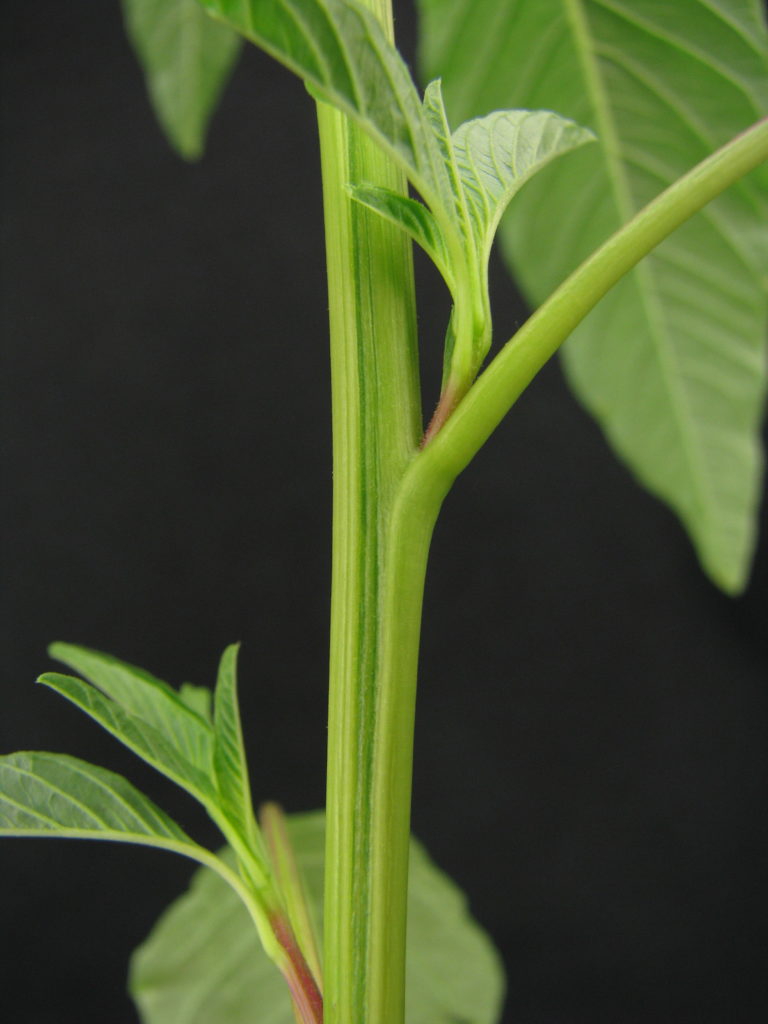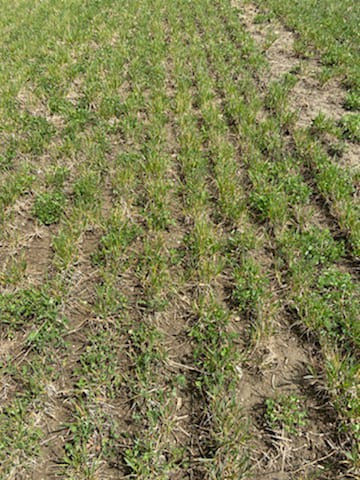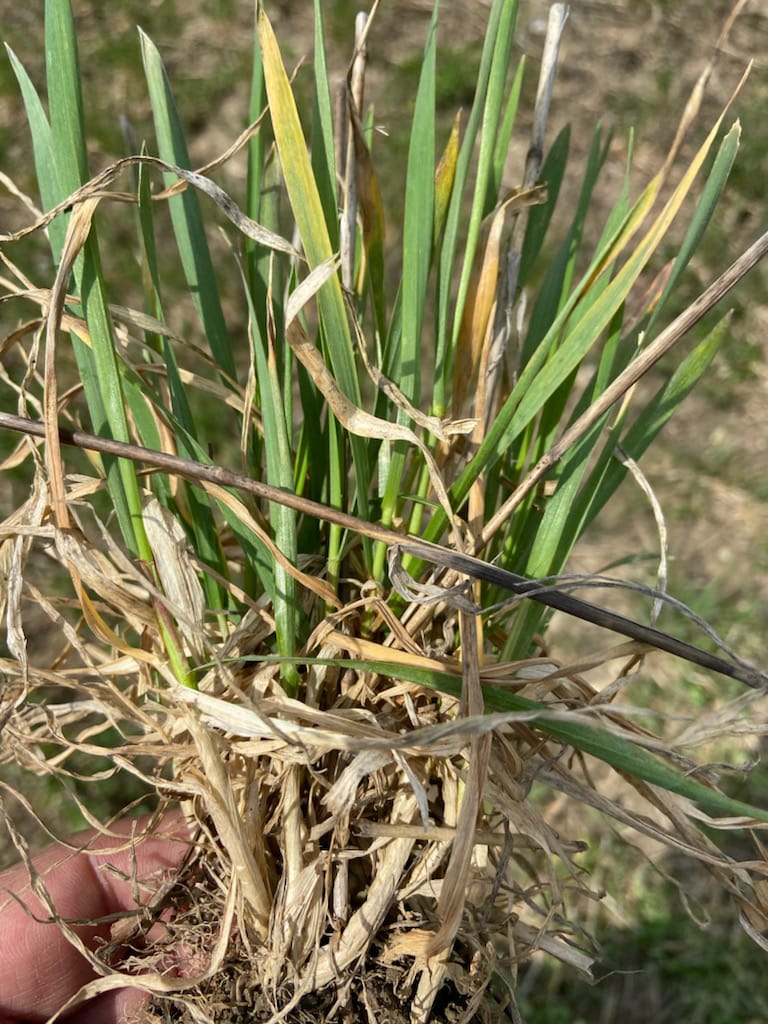Cobourg-Winchester Agribusiness Breakfast Meeting Minutes
April 28, 2021
Weather and Soil Conditions
Things have cooled off since the last meeting two weeks ago. In the past two weeks, 67 growing degree days (GDD) were accumulated in Cobourg, and just under 100 GDD in Kemptville.
While the rain expected for this week will be welcome in areas that got little from past showers, most of the region’s soils remain unfit for planting soybeans or corn with the exception of sandier ground. For the most part however, unseasonably dry conditions in April have allowed for preparatory field work to happen in good time.

Winter Wheat
As stated in the last meeting, winterkill across the region is very limited after a mild winter. Winter wheat in Eastern Ontario overwintered better than it has in years. Stands are excellent for the most part and early, September-planted wheat is into stem elongation and between 8-10” tall. October-planted wheat is tillering well and looking good.
Nitrogen applications are ongoing, and many have been able to time fertilizer nicely before rains. Weed control is also in full swing for most of the region, though night time temperatures have been too low in the upper Ottawa Valley for much spraying yet. Some growers are also applying plant growth regulators now, and many have plans for T1 fungicides next week. Some leaf diseases have been found in the lower part of the canopy in the Southwest where wheat is up to growth stage 32. This is variety and growth dependent so each field should be scouted.
Wheat growers are advised to check if buyers of hard red winter wheat will still be offering protein premiums next season and plan accordingly.
Spring Cereals and Forages
Spring cereals are in and up, with about normal acreage, and 65-70% of those fields have had nitrogen applied. A good chunk of those acres are mixed grain or barley for harvest as grain or forage. Some of those were frost-seeded, but far less were underseeded with alfalfa as more move to direct seeding, either at a “normal” time in spring or after an early cut of annual forage. Underseeding can have inconsistent results due to weather or management. Dry springs often result in poor establishment of the perennial forage. Some growers try to suppress weeds with higher cereal seeding rates, but this will also impact the alfalfa trying to grow below the same canopy. Similarly to winter wheat, there was next to no winterkill of alfalfa. Alfalfa along Lake Ontario is 6-8” tall, with no disease pressure noted. Cold nights have slowed growth, and in some fields leaf tips were nipped by frost. Some cereals were planted when soils were still tacky, as evidenced by uneven emergence and less than ideal stands.
Hay supplies are still tight after several poor seasons, but acreage is not likely to increase with record soybean and strong corn prices. Producers are shifting to managing forages more intensively, reflected in more widespread fertilizer and fungicide application than is usual for Ontario hay acres. Seed supply for oat-pea and triticale-pea mixes is tight.
Corn
Very little corn has been planted yet in the region. Some acres on lighter ground and on large-acreage operations have seen planters and many growers have tested and calibrated planting equipment on a few acres, but many soils that appear dry at the surface are mostly still too wet or cold for corn. As mentioned above, conditions in the past month have been good for getting pre-plant field work out of the way. There are some exceptions, however, where seedbed tillage was too hasty and soil structure has suffered.
Soybeans
Soybean progress is generally similar to corn, though agronomists in the East tend to recommend soybeans be planted in cool soils before corn as soybeans are more tolerant to cold water uptake.
Weed Control

Weed growth is a couple weeks ahead of schedule this year thanks to warm temperatures in early April. Seedlings of ragweed, buckwheat and lambsquarters have been spotted. Lambsquarters need 150 GDD to emerge, and some 4-leaf plants have been found already. The priority for weed control should be fields that didn’t get fall herbicides for dandelions – this should be done soon.
Thought not yet common east of Toronto, waterhemp was discussed but there are several confirmed patches and everyone should be on the lookout for this problem weed. An “odd-looking pigweed”, waterhemp can be distinguished from pigweeds by its narrow leaves with wavy margins and complete lack of hairs. While patches of green or redroot pigweed are usually uniform, waterhemp will show diverse leaf size, stem colour, and margin waviness. It’s most often mistaken for green pigweed, but green pigweed has just enough “peach fuzz” at the top node to be visible with a hand lens. If in doubt, a sample could be sent for DNA analysis at Harvest Genomics, which can identify the species and any herbicide-resistance present. Most waterhemp in Ontario is found to be resistant to glyphosate, group 2 and group 9 herbicides, with group 14 resistance less common. As a strictly cross-pollinated plant, waterhemp can quickly combine resistance genes from different populations. Pre-emergence weed control is important for keeping ahead of this weed. Group 15 and 29 products still work well, though resistance to these is emerging in the US Midwest. Tillage has not been shown to be effective. See Waterhemp: biology and control on fieldcropnews.com for more information about waterhemp in Ontario.
For cereal rye cover crop termination before soybeans, glyphosate is the most effective option, killing the rye in 10-14 days at current temperatures. It may be combined with other herbicides if the weed spectrum requires, but it wouldn’t speed up the rye termination. A masters student is working with Dr. Francois Tardif to study the effectiveness of alternative strategies, but preliminary results support the current recommendations.
Bluegrass pressure seems to be increasing. Annual bluegrass, roughstalk bluegrass, and fowl meadowgrass are found mostly in forages and cereals. They are difficult to kill, come up early, grow quickly, and flower quickly. There are few effective herbicide options. See this article from Mike Cowbrough for more details.
Crop Insurance
Very few damage reports have come in on forages or winter wheat.
Growers are encouraged to check enrollment deadlines as extensions have been made for some programs. The deadline for forage enrollment is now May 17th. May 31st for spring-seeded crops.
A RMP program has been confirmed for 2021. Rates and deadline dates will be available shortly. High commodity prices are causing some to consider dropping RMP, but remember that there is a 2-year waiting period to re-apply.
Agricorp is updating their claim system.
Agronomy Discussions
Should I till or should I roll now?
Tillage for seedbed preparation in a dry year carries risks. As a general guideline, secondary tillage causes evaporation of about ¼” of moisture in the worked layer. If moisture is already low that could lead to poor germination, especially in a large-seeded crop like soybeans that require 4x seed weight in moisture to germinate.
Working dry soil tends to lead to larger aggregate size in the seedbed, particularly in heavier soils. That would result in poor seed-soil contact and excessive evaporation from the tilled layer. Clayey soils often have a strong moisture gradient, with soils dry at the top and moist to wet underneath. We often think of this with regards to tillage depth in relation to the risk of compaction or smearing. From a moisture perspective, there’s limited capillary wetting of the looser upper layer in heavier soils, so seed should be placed below it where there’s enough moisture. This is less of a concern in medium- or lighter-textured soil. Soybeans can be seeded to a maximum depth of 2.5 inches to find moisture at this time of year, although a 2.0 inch depth usually provides a better plant stand. Ideally, soybeans should be seeded at 1.5 inches. Soybeans are better able to push through deeper planting depths in higher temperatures. Forecasted rains might resolve this concern soon.
Bottom line: work as shallow as possible and only if necessary, firm the surface if the seedbed is too coarse, and plant immediately to get the seed into moisture.
What’s with this wheat?
James D’Aoust shared a picture of strange wheat from a field underseeded with red clover that was missing a main stem but had several tillers.


After ruling out hormone applications, the consensus was that the main stem had died, but that the plant was established enough to continue tillering and good enough to keep the stand.
Leading leaf hoppers astray
Jenn Doelmann shared questions about IPM for potato leaf hoppers (PLH), specifically in organic forages. Could a multi-species stand reduce the impact of leaf hoppers enough to avoid treatment?
Leafhoppers don’t overwinter in Ontario. Instead, they blow in from the south on storms, so they land where they fall. Lower leaf disease pressure has been observed in cereal mixes as spores land on unsuitable hosts, so it’s possible. However, multiple agronomists have observed significant PLH infestation in multi-species forage mixes. The risk of PLH is about as evenly distributed as the rain.
When PLH thresholds are reached (table 1 below) the recommendation is to cut ASAP. The field should then be scouted again in 5-7 days. If populations are back at threshold levels, a spray treatment is warranted.

Other Announcements
- The Ontario Soil Network is running a virtual roadshow this season. July – October, the Ontario Soil Network (OSN) is launching a mobile app to take the Ontario Soil Roadshow online. Farmers in Ontario with soil health practices and trials to show off, will choose a site to appear on our interactive map-app. They will upload information, photos, videos and links to tell the story of the soil at each site throughout the season. App users will be reached through social media, partnered communications, print advertisements & signage. They will surf the map from home, visit sites (as Covid-19 restrictions allow), connect with other farmers online, post their visit to twitter, win prizes for engagement, and even get push notifications when they near a site on the way to get parts. Contact admin@ontariosoil.net for information about sponsoring a site.
- The Algonquin College Agribusiness program at Perth Campus is going online this year.
OMAFRA COVID funding updates:
- Intake opens on April 22, 2021 for the new, $10 million Enhanced Agri-food Workplace Protection Programto help more farmers and agri-food operators purchase personal protective equipment, enhance cleaning and disinfection and redesign workstations to better protect workers. The funding will help farmers who experience unexpected costs as a result of a COVID-19 outbreak among on-farm employees.
- Farms and agri-food businesses that hire three or more employees will be eligible for funding.
- Additional businesses and workers are eligible including corn detasselers, transporters, hatcheries, and primary processing.
- Detailed program information and application forms are available here
- Agri-tech Innovation Program.
- Ontario Investing $25.5 million in Technology to Protect Agri-Food Workers.
- Tech funding to target a streamlined merit competitive assessment
- Program announced Thursday April 22.
- Early Adopters Intake opens May 17th for 5 weeks (closing June 21st)
COVID Information Resources
You can find the most recent information to prevent the spread of COVID-19 including information about prevention, screening, cohorting, outbreak isolation support, health and wellness assessments, social supports and workplace rights and responsibilities by visiting Ontario.ca/covidfarmertoolkit, an online resource for farmers and workers.
COVID Vaccination Webinars
As part of OMAFRAs efforts to ensure farmers and agri-food businesses have the information they need to protect their workers, we are providing virtual health and safety information sessions on April 22, 26 and 29. For more information and to register visit omafra.gov.on.ca/webinars.
Next meeting is scheduled for May 12th
